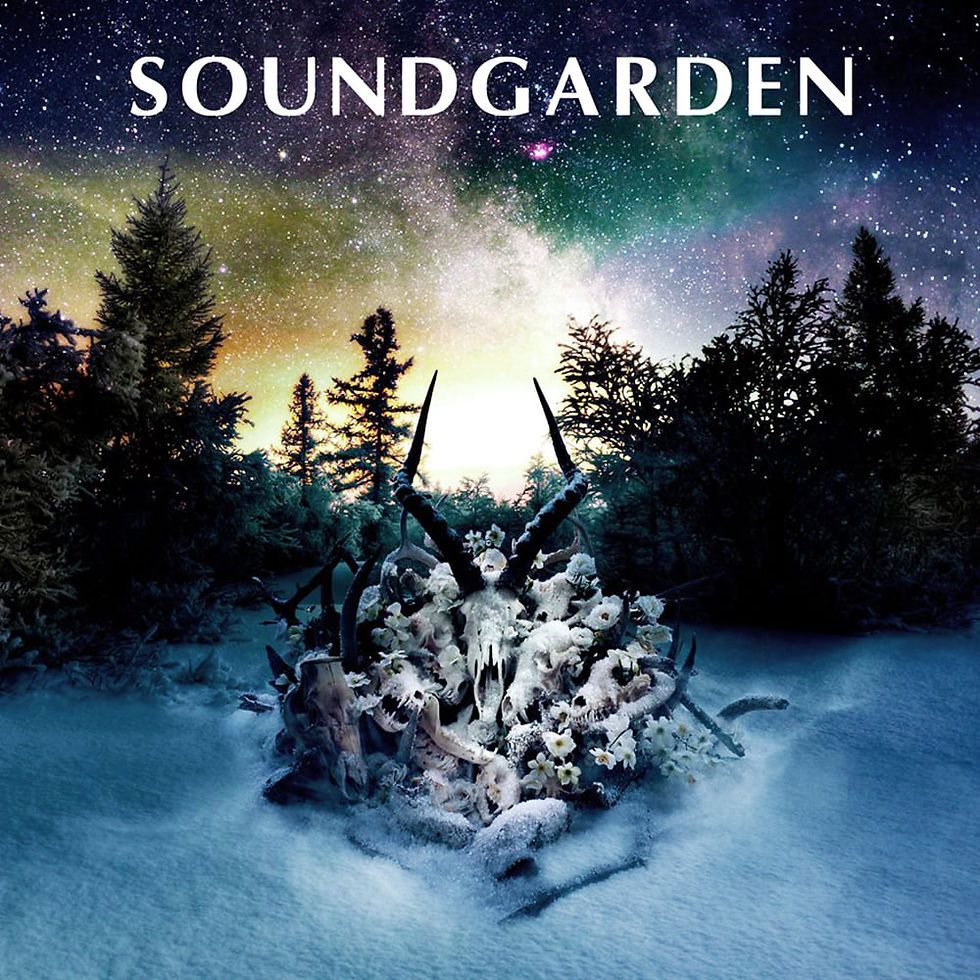Soundgarden - Down On the Upside
- FaceOff - עימות חזיתי

- May 21
- 3 min read
This is Soundgarden's fifth studio album released on May 21st, 1996, and the band's last, until its reunion in 2012 and the release of the album "King Animal".

Apparently, the band didn't really mean it, but the album's name best describes what is hidden under the cover. The title "Down on the Upside" taken from the lyrics of the song "Dusty", shows us a band in which the first cracks begin to appear, a band that goes against the direction, swims against the current, looking for new directions.
Unlike "Soundgarden's" previous albums, the music on "Down on the Upside" is more experimental, more diverse, involves the use of additional instruments (mandolins and keyboards), and has more complex harmonies and more ambitious song structures.
Unfortunately, it was the "swimming against the current" and the new directions in which the band chose to experimentת that eventually led to its dissolution. The tension between lead guitarist Kim Thayil and Chris Cornell intensified during the recordings of the album, due to Cornell's desire to stay away from the aggressive and heavy riffs that characterized the band.
The result of the band's change and the rising tensions between Kim and Chris were also reflected in the number of songs that each of the band members brought to the album. Thayil's contribution to the 16-track album was just one song - "Never the Machine Forever", and this is probably not by chance, it was also the last song the band recorded for the album.
On the problems "from home" described above, you can also add "outside" difficulties. The album comes out at a time when Grunge was in decline, most of the genre's big names were no longer active or "on their way down" (Cobain and Staley) and others have become less and less relevant. At the same time, the first buds of post-grunge and new metal sounds were emerging and taking the "throne" from Grunge.

(Photo: Michael Tighe)
Despite all these difficulties and against all odds, "Soundgarden" manages to show its power and its lasting influence on the Grunge genre, and release what will later turn out to be an album that was probably the "swan song" of the Grunge era. For those of you who are raising their eyebrows, we will mention that in the same year "Pearl Jam" released "No Code" and sank deep into genres like garage rock and alternative, and even Dave Grohl who rose to fame thanks to grunge, stepped deep into post-grunge with the album "The Colour and the Shape".
So what makes "Down on the Upside" still a relevant and effective album in a dying genre, is precisely the reason that ultimately led to the band's dissolution. The boldness to do things differently, the courage to open up to new directions, and the desire for diversity.
The song "Burden In My Hand" makes massive use of mandolins. "Zero Chance" is melancholy at its best which shows the complexity of the band and the new direction it was heading. "Tv Cobb" combines contrasting elements of punk and country, and the monotonous guitar line in the slow and dark "Applebite", corresponds with Robert Smith's famous guitar line from "The Cure", in the song "A Forest", played at a slow speed.
It is important to emphasize, that the versatility of this album did not change the band's identity, and you can still hear a lot of good-rooted grunge pieces here. "Pretty Noose" opens up the album with heavy, gloomy, and dark sounds, familiar to us from previous works by the band. "Rhinosaur" which comes right after has a classic grunge sound, as do "Never Named" and "Never The Machine Forever" which are a bit reminiscent of the old "Soundgarden".
To sum up, it may not be Soundgarden's best album, but at the same time, it's still a great album by a huge band, featuring memorable moments. "Pretty Noose", "Burden In My Hand", "Blow Up The Outside World", "Dusty" and others, will continue to resonate in Chris Cornell's mighty voice, in the history of rock forever...
Listen to the album on Spotify, Apple Music













Comments